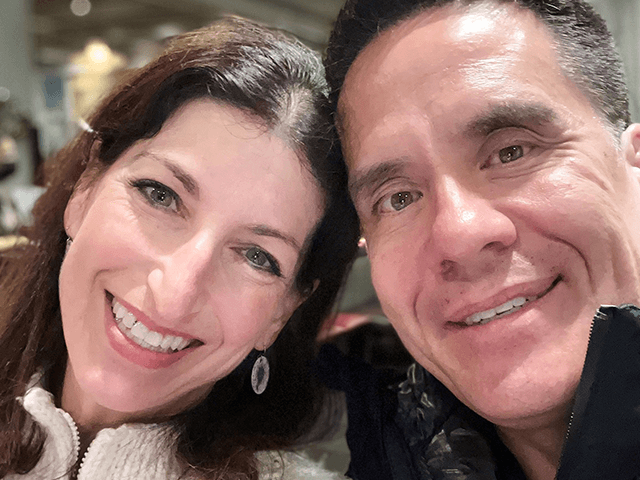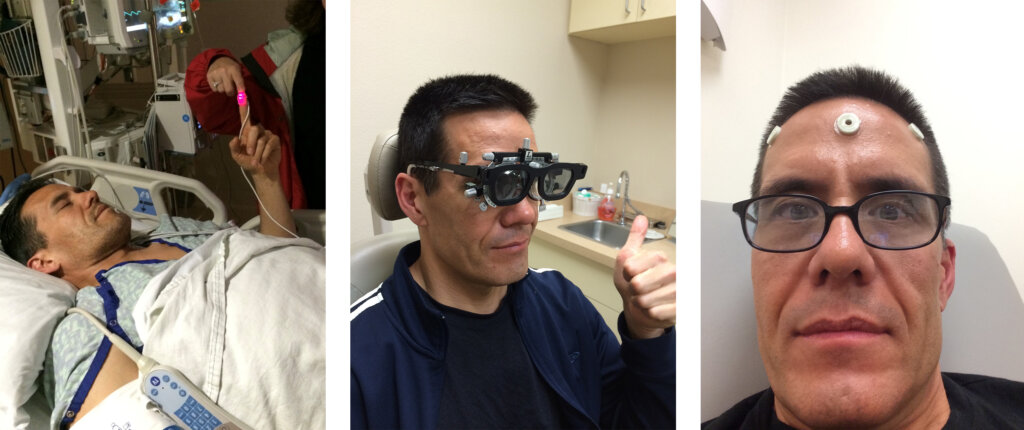
TYPE OF STROKE: HEMORRHAGIC
One afternoon in March of 2014, Johanes was assembling a do-it-yourself piece of furniture when he realized that something just wasn’t right. He started feeling very strange. He had a massive headache and then suddenly lost his balance, most of his vision, and the feeling on his right side. So he sat down on the couch and called for his two middle school children to help him. His disoriented speech and coordination only enabled him to tell them to dial 911. The paramedics arrived immediately and transferred him to Good Samaritan Hospital in San Jose, CA only 5 minutes away.
At the time, his wife Linda, was in San Francisco with their daughter at a college orientation event in a vintage hotel that had spotty cell service. When the event finished and they headed to the car, the texts started pouring into their phones that dad was in trouble and had been rushed to the hospital. In a state of concern and worried panic, Linda contacted the hospital, while her daughter and she drove out of the city. When she reached the emergency room team on her cell phone, to get an update on Johanes’ status, the voice on the other end of the phone reassured her that Johanes was in safe hands and the hospital was running a series of tests to determine what had occurred, and he was in good spirits. Linda took a slight sigh of relief, as they focused on getting to the ER as soon as possible. Linda’s mind raced on the drive to the ER, wondering what possibly could have happened. Johanes was a marathon runner, a Silicon Valley Technology Executive with a PhD, and someone who traveled back and forth to Asia for business on a weekly basis. He was healthy, fit and a sharp business leader.
As Linda entered the hospital ER, she was intercepted by a nurse who had a look that worried her, and soon the words Linda heard were not good. She was told that Johanes was on life support, and he had suffered a massive hemorrhagic stroke. Linda was told that the stroke occurred in a section of the brain called the thalamus, which acts as a relay station for all incoming motor movement and sensory information. The doctors took action to protect the entire body, and he was in ICU for more than a week, and much of the time he was kept in a coma and also kept very cool allowing the brain and body to start the healing process. In reflecting back, Johanes only remembered sitting on the couch at home not feeling well, and being wheeled into the emergency room, then waking up in the hospital a few weeks later. While in ICU, the bleeding from the hemorrhagic stroke started to reduce, and he was taken off life support as his body stabilized, and his brain started to resume control. He still suffered from aphasia, vision challenges, a great deal of pain and limited mobility on his right side. Eventually neurologists were able to determine that the cause of the stroke was a birth defect related to an AVM (arteriovenous malformation), which is an abnormal tangle of blood vessels. This resulted in the need to perform microscopic brain surgery to remove the area where the bleed occurred which caused the stroke. Surgery was done in December, eight months after the stroke occurred, at Stanford Health Care.
Life is always filled with unusual twists and turns and so this next chapter of Johanes and Linda’s story was an amazing discovery made while reviewing one of Johanes’ many scans. While the doctors were looking at his head and neck CT, they noticed a small spot on the top of his lung, which ironically was only seen due to the fact this particular imaging went low enough to capture the top part of the lung. Originally, they thought it was just benign scar tissue from a prior illness. However, Johanes was advised to follow a regular screening schedule as a precaution. Over a year later, after several “clear” scans, the spot started to change in a concerning way. It was determined it was possibly the very, early stage of lung cancer. At this stage, it was much more treatable. They were able to remove it with surgery. Johanes has undergone additional treatments and surgeries to prevent any further development. Ironically, a life-threatening stroke saved Johanes’s life.
Johanes has worked hard for years at his rehabilitation and has gained increased mobility and his speech has improved tremendously. He still experiences a burning sensation in his hand and on the right side of his face, and fatigue from time-to-time. His amazing healing and recovery were only made possible with the help of Linda, his caregiver and wife. As a skilled and accomplished former engineer and manager, her skills at researching, networking, analyzing data and being curious pushed Johanes and the medical system to get the results needed when critical decisions were necessary through the surgeries, extended hospital stays, and therapies. Not to mention that Linda was still responsible for managing the family and finances during critical years for their children of growing and participating in school and life events. Linda always hoped for the best outcome and was motivated to not accept the first “no” as a final answer. Johanes’s improvement and progress is the result of a couple driven to make life better each day. Today, Johanes still suffers from vision issues, fatigue, chronic pain and numbness on his right side. His mobility and speech have improved, and while he has not returned to running marathons, he is driving and enjoying life with his family and friends. Having an attitude of hope and inspiration has always been a driving force in Johanes’s life. It serves him well as he is an amazing stroke champion.


